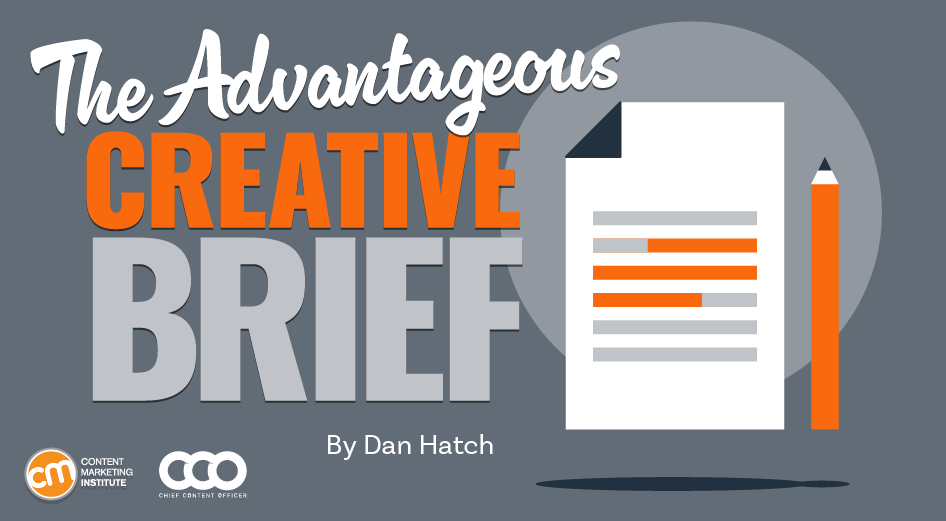MARKETING
How to Build a Marketplace Platform

To facilitate direct transactions between buyers and sellers, an online marketplace serves as an intermediary. Customers want a marketplace that can deliver cutting-edge security features for Fraud Detection, ensure transaction integrity for both parties, and give real-time monitoring of transactions in order to stay competitive.
So, let’s go into further depth about building a profitable marketplace website.
Let us now examine the many alternatives for the building of a marketplace business model. Of course, there is no one-size-fits-all solution to the question of how to develop a marketplace for all businesses.
Revenue of Etsy Inc. from 2012 to 2020 was 1.3bn USD. eBay’s annual net revenue from 2018 to 2020 was 10.3bn USD. The revenue of these marketplaces has become faster after COVID-19 pandemic.
So, the focus will be on speed to market, technical knowledge, development costs, scaling capabilities, and customization options. It’s likely that you’ll be able to determine which solution is best for your company.
1. Creating a new piece of software from scratch
Doing everything exactly as you had envisioned can be an option for you if you have the requisite skills or access to a team of professionals. In this case, the primary advantages come from having full access to the source code and not relying on any third-party software.
As per reports of Digital Commerce 360, 20% of buying managers spent on online marketplaces, and 22% spent more during the time of pandemic.
However, this method requires a significant investment of time at least three months since building a marketplace website capable of seamlessly processing all transactions is no small feat. This is a significant negative since it is sometimes necessary to construct an online marketplace website as quickly as feasible.
Developing and maintaining a platform on your own, while experimenting with bespoke features (which may or may not be helpful or popular), may quickly deplete your financial resources.
2. Creating it using open-source software
Using pre-existing software saves time over starting from scratch since the pre-existing functionality of marketplace software is complete, and it is easy to add new features. Because of this, it will be much less expensive to construct than the preceding choice.
It will take at least a month before you may launch again due to time constraints. The open-source software that is simple to alter is hard to come by; certain changes may need the involvement of developers.
Updating and maintaining the software might be a hassle as well. It’s up to your team to manage things like when a software developer doesn’t provide updates on the latest regulatory requirements for making payments.
3. Choose a website builder
There are a lot of options when it comes to basic website builders, and they’re all reasonably priced. Just have a look at Magento and Shopify as e-commerce platforms or Wix and WordPress as website-building tools.
Some of them even allow for extensive customization via the use of third-party extensions. So, if you’re comfortable with plugins and tools, going with a website builder can be the most cost-effective option for a business model for the marketplace.
When everything is said and done, though, it might take weeks to get everything just right for everyone. As a result, every plugin and extension must be tuned to meet or exceed the very high standards set by users.
There’s also a good possibility you won’t be able to locate a plugin that does what you want it to do at all. A plugin or extension that doesn’t work properly might cause havoc with your marketplace’s operations, therefore it’s best to avoid gambling your marketplace’s success on it.
4. Using a no-code marketplace builder
The easiest approach to building a platform is via the use of a SaaS or a marketplace-as-a-service technology. It’s possible that you’ll be online in as little as a day.
Your concept and the aspects that are crucial to your customers may be validated quickly by other firms using SaaS software. With this strategy, you obtain the greatest user experience for the least amount of money.
Last but not least, managing your web company and all of its facets does not need any programming knowledge on your part.
However, like with the previous method, there may be some restrictions on the number of features since software vendors prefer to deal with as many clients as feasible as possible. Because the features that are now accessible may not be sufficient for your firm to expand, this is a concern for scalability as well.
5. No-code toolset development
If you’ve mastered a wide range of no-code technologies, you may take on the building of marketplace sites. Foresee future upgrades and choose the proper components for today’s needs.
But even in this circumstance, it may take weeks to discover the right tools and learn how to use them. This technique is probably not for you if you have no idea what Webflow, Airtable, Parabola, and Jetboost imply.
It takes at least two weeks to learn how to use no-code tools, even for a seasoned no-coder. However, the platform might be unstable and need a lot of further development in the future.
6. Developing a SaaS product on top of an API-based marketplace
Instead of spending time on the fundamentals, you may concentrate on the features using this method. When compared to starting from scratch, this might save you a significant amount of money.
Unlike any other no-code tool, you may experiment with your ideas and combine other tools with them. Finally, if a software vendor is in charge of support, upgrades, and compliance, it is more trustworthy.
However, the fact that you’ll require development expertise or a team of professionals in this situation might be seen as a disadvantage. Using APIs to build a product is more expensive and more consuming than using a no-code solution.
Takeaway
The retail business is likely to be transformed by online marketplaces in the near future. 75 percent of marketing professionals say that the most essential advantage of marketplaces for organizations is the ability to contact consumers in areas where they like to purchase.
Online marketplace platforms may be built to stand even the most severe economic downturns with the correct marketplace development firm. Even if that’s a valid statement, markets serve a second purpose that’s just as important. In the event of a widespread coronavirus pandemic in 2020, a marketplace may be the only method to reach your target audience.
Source link
MARKETING
How To Develop a Great Creative Brief and Get On-Target Content

Every editor knows what it feels like to sit exasperated in front of the computer, screaming internally, “It would have been easier if I’d done it myself.”
If your role involves commissioning and approving content, you know that sinking feeling: Ten seconds into reviewing a piece, it’s obvious the creator hasn’t understood (or never bothered to listen to) a damn thing you told them. As you go deeper, your fingertips switch gears from polite tapping to a digital Riverdance as your annoyance spews onto the keyboard. We’ve all been there. It’s why we drink. Or do yoga. Or practice voodoo.
In truth, even your best writer, designer, or audiovisual content creator can turn in a bad job. Maybe they had an off day. Perhaps they rushed to meet a deadline. Or maybe they just didn’t understand the brief.
The first two excuses go to the content creator’s professionalism. You’re allowed to get grumpy about that. But if your content creator didn’t understand the brief, then you, as the editor, are at least partly to blame.
Taking the time to create a thorough but concise brief is the single greatest investment you can make in your work efficiency and sanity. The contrast in emotions when a perfectly constructed piece of content lands in your inbox could not be starker. It’s like the sun has burst through the clouds, someone has released a dozen white doves, and that orchestra that follows you around has started playing the lovely bit from Madame Butterfly — all at once.
Here’s what a good brief does:
- It clearly and concisely sets out your expectations (so be specific).
- It focuses the content creator’s mind on the areas of most importance.
- It encourages the content creator to do a thorough job rather than an “it’ll-do” job.
- It results in more accurate and more effective content (content that hits the mark).
- It saves hours of unnecessary labor and stress in the editing process.
- It can make all the difference between profit and loss.
Arming content creators with a thorough brief gives them the best possible chance of at least creating something fit for purpose — even if it’s not quite how you would have done it. Give them too little information, and there’s almost no hope they’ll deliver what you need.
On the flip side, overloading your content creators with more information than they need can be counterproductive. I know a writer who was given a 65-page sales deck to read as background for a 500-word blog post. Do that, and you risk several things happening:
- It’s not worth the content creator’s time reading it, so they don’t.
- Even if they do read it, you risk them missing out on the key points.
- They’ll charge you a fortune because they’re losing money doing that amount of preparation.
- They’re never going to work with you again.
There’s a balance to strike.
There’s a balance to be struck.
Knowing how to give useful and concise briefs is something I’ve learned the hard way over 20 years as a journalist and editor. What follows is some of what I’ve found works well. Some of this might read like I’m teaching grandma to suck eggs, but I’m surprised how many of these points often get forgotten.
Who is the client?
Provide your content creator with a half- or one-page summary of the business:
- Who it is
- What it does
- Whom it services
- What its story is
- Details about any relevant products and services
Include the elevator pitch and other key messaging so your content creator understands how the company positions itself and what kind of language to weave into the piece.
Who is the audience?
Include a paragraph or two about the intended audience. If a company has more than one audience (for example, a recruitment company might have job candidates and recruiters), then be specific. Even a sentence will do, but don’t leave your content creator guessing. They need to know who the content is for.
What needs to be known?
This is the bit where you tell your content creator what you want them to create. Be sure to include three things:
- The purpose of the piece
- The angle to lead with
- The message the audience should leave with
I find it helps to provide links to relevant background information if you have it available, particularly if the information inspired or contributed to the content idea, rather than rely on content creators to find their own. It can be frustrating when their research doesn’t match or is inferior to your own.
How does the brand communicate?
Include any information the content creators need to ensure that they’re communicating in an authentic voice of the brand.
- Tone of voice: The easiest way to provide guidance on tone of voice is to provide one or two examples that demonstrate it well. It’s much easier for your content creators to mimic a specific example they’ve seen, read, or heard than it is to interpret vague terms like “formal,” “casual,” or “informative but friendly.”
- Style guide: Giving your content creator a style guide can save you a lot of tinkering. This is essential for visuals but also important for written content if you don’t want to spend a lot of time changing “%” to “percent” or uncapitalizing job titles. Summarize the key points or most common errors.
- Examples: Examples aren’t just good for tone of voice; they’re also handy for layout and design to demonstrate how you expect a piece of content to be submitted. This is especially handy if your template includes social media posts, meta descriptions, and so on.
All the elements in a documented brief
Here are nine basic things every single brief requires:
- Title: What are we calling this thing? (A working title is fine so that everyone knows how to refer to this project.)
- Client: Who is it for, and what do they do?
- Deadline: When is the final content due?
- The brief itself: What is the angle, the message, and the editorial purpose of the content? Include here who the audience is.
- Specifications: What is the word count, format, aspect ratio, or run time?
- Submission: How and where should the content be filed? To whom?
- Contact information: Who is the commissioning editor, the client (if appropriate), and the talent?
- Resources: What blogging template, style guide, key messaging, access to image libraries, and other elements are required to create and deliver the content?
- Fee: What is the agreed price/rate? Not everyone includes this in the brief, but it should be included if appropriate.
Depending on your business or the kind of content involved, you might have other important information to include here, too. Put it all in a template and make it the front page of your brief.
Prepare your briefs early
It’s entirely possible you’re reading this, screaming internally, “By the time I’ve done all that, I could have written the damn thing myself.”
But much of this information doesn’t change. Well in advance, you can document the background about a company, its audience, and how it speaks doesn’t change. You can pull all those resources into a one- or two-page document, add some high-quality previous examples, throw in the templates they’ll need, and bam! You’ve created a short, useful briefing package you can provide to any new content creator whenever it is needed. You can do this well ahead of time.
I expect these tips will save you a lot of internal screaming in the future. Not to mention drink, yoga, and voodoo.
This is an update of a January 2019 CCO article.
HANDPICKED RELATED CONTENT:
Cover image by Joseph Kalinowski/Content Marketing Institute
MARKETING
Quiet Quitting vs. Setting Healthy Boundaries: Where’s The Line?

MARKETING
Microsoft unveils a new small language model

Phi-3-Mini is the first in a family of small language models Microsoft plans to release over the coming weeks. Phi-3-Small and Phi-3-Medium are in the works. In contrast to large language models like OpenAI’s ChatGPT and Google’s Gemini, small language models are trained on much smaller datasets and are said to be much more affordable for users.
We are excited to introduce Phi-3, a family of open AI models developed by Microsoft. Phi-3 models are the most capable and cost-effective small language models (SLMs) available, outperforming models of the same size and next size up across a variety of language, reasoning, coding and math benchmarks.
What are they for? For one thing, the reduced size of this language model may make it suitable to run locally, for example as an app on a smartphone. Something the size of ChatGPT lives in the cloud and requires an internet connection for access.
While ChatGPT is said to have over a trillion parameters, Phi-3-Mini has only 3.8 billion. Sanjeev Bora, who works with genAI in the healthcare space, writes: “The number of parameters in a model usually dictates its size and complexity. Larger models with more parameters are generally more capable but come at the cost of increased computational requirements. The choice of size often depends on the specific problem being addressed.”
Phi-3-Mini was trained on a relatively small dataset of 3.3 trillion tokens — instances of human language expressed numerically. But that’s still a lot of tokens.
Why we care. While it is generally reported, and confirmed by Microsoft, that these SLMs will be much more affordable than the big LLMs, it’s hard to find exact details on the pricing. Nevertheless, taking the promise at face-value, one can imagine a democratization of genAI, making it available to very small businesses and sole proprietors.
We need to see what these models can do in practice, but it’s plausible that use cases like writing a marketing newsletter, coming up with email subject lines or drafting social media posts just don’t require the gigantic power of a LLM.
Dig deeper: How a non-profit farmers market is leveraging AI
-

 MARKETING7 days ago
MARKETING7 days agoEffective Communication in Business as a Crisis Management Strategy
-

 SEO6 days ago
SEO6 days agobrightonSEO Live Blog
-

 SEO5 days ago
SEO5 days agoGoogle March 2024 Core Update Officially Completed A Week Ago
-

 WORDPRESS5 days ago
WORDPRESS5 days ago9 Best WooCommerce Multi Vendor Plugins (Compared)
-
SEARCHENGINES6 days ago
Daily Search Forum Recap: April 25, 2024
-

 WORDPRESS7 days ago
WORDPRESS7 days agoYour New Favorite Way to Develop WordPress Locally – WordPress.com News
-

 SEARCHENGINES5 days ago
SEARCHENGINES5 days agoGoogle March 2024 Core Update Finished April 19, 2024
-

 MARKETING4 days ago
MARKETING4 days agoNavigating the Video Marketing Maze: Short-Form vs. Long-Form














![The Current State of Google’s Search Generative Experience [What It Means for SEO in 2024] person typing on laptop with](https://articles.entireweb.com/wp-content/uploads/2024/04/The-Current-State-of-Googles-Search-Generative-Experience-What-It.webp-80x80.webp)

You must be logged in to post a comment Login